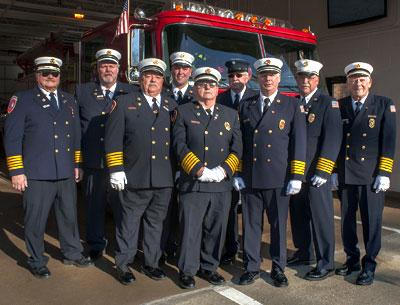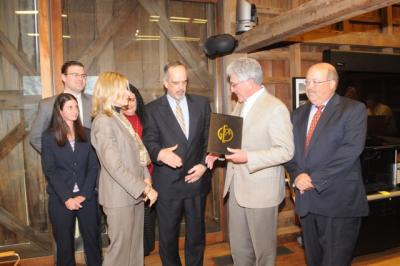Dire Report on New York Wildlife
Dire Report on New York Wildlife

Box turtles, black ducks, and bumblebees are a few of the animals expected to suffer catastrophic declines in New York within 10 years unless drastic measures are taken, according to a state report that was just released. In all, 186 mammals, birds, fish, shellfish, and amphibians were described as likely to drop to critical levels unless urgent conservation action is taken. In addition, an equal number of species was listed as expected to see significant declines by 2025. The report, released Dec. 23, was prepared by the New York Department of Environmental Conservation and the Cornell University Cooperative Fish and Wildlife Research Unit. It contains many species already considered endangered or threatened in the state, but others, such as the American eel, that are of newer concern. “Ten years is not enough time,” Frank Quevedo, the director of the South Fork Natural History Museum in Bridgehampton, said. Steps should have been taken to protect the listed species 10 to 15 years ago, he said. “They are now in crisis mode. The damage is done.” On the list as having the highest priority for immediate protection lest they become extinct in New York are such birds as the barn owl, piping plover, eastern meadowlark, black skimmer, and whippoorwill. Among land mammals are the New England cottontail rabbit and two bat species. Amphibians and reptiles included are the blue-spotted salamander, Atlantic leopard frog, and the eastern hog-nosed snake. Freshwater and marine life also appeared to be deeply in trouble, with such South Fork-familiar species as bay scallop, horseshoe crab, lobster, winter flounder, pipefish, sea horse, and shad among them. “The vast majority of these animals are in trouble because of habitat loss,” Bob DeLuca, the president of the Group for the East End, said. “The chilling part is that it is a very big list.” Oceangoing animals, including white, thresher, dusky, and porbeagle sharks; blue, fin, right, sei, and sperm whales, and harbor porpoise are on the urgent-action list as well. Mr. DeLuca said that the inclusion of the black duck among the 186 species of urgent concern was a bellwether. “The black duck was ubiquitous.” Like the passenger pigeon, “it used to blackout the sky,” he said. It has experienced declines since the 1970s, he said, due to the draining of upstate freshwater wetlands and loss of wintering grounds on Long Island. Another reason could be its increasing hybridization with mallards. There were other species on the list that Mr. DeLuca said might also come as a surprise, such as the brown thrasher, a songbird dependent on a thick woodland understory to lay its eggs, and the bob white quail, which has seen an approximately 85-percent decline from its peak. In a press statement, Joe Martens, the D.E.C. commissioner, said the department was “working to identify and eliminate threats such as habitat loss and fragmentation, pollution, and invasive species to maintain healthy and balanced ecosystems, which are critical in maintaining our state’s fish and wildlife resources.” In all, 594 species were looked at by the researchers, with 372 in need of some kind of human intervention. The report identified 111 animals for which more research is necessary or that may be highly vulnerable to population losses as a result of environmental changes. Link to the report. For Mr. DeLuca, the question was whether the D.E.C. had the funding and staff to meet the challenge. The agency has been “substantially hammered,” he said, by budget cuts in recent years. “In this region in particular it cannot function as a true regulatory agency.” “The operational piece is what’s missing, and that piece is dependent on money,” he said. It is widely believed by conservationists like himself that the D.E.C. is not even moderately up to the challenge, he said. A report from Thomas DiNaopli, the state comptroller, states that on an inflation-adjusted basis, the department’s funding fell by 22 percent between 2004 and 2014. Its work force dropped by more than 10 percent during the same period. The D.E.C.’s Division of Fish, Wildlife, and Marine Resources is most directly responsible for New York’s animals and natural places. Its staff fell about 5 percent in the last decade. In addition, Mr. DiNapoli reported that more than $500 million from the state’s Environmental Protection Fund has been diverted by lawmakers for other purposes since it was established in 1993. None of the money has been repaid. Mr. DeLuca said that the potential value of the species list that was just released was twofold. It could help local officials make decisions about land purchases and development proposals. And it could perhaps lead to greater funding in the state budget. “Reports like this shake the tree,” he said. Among the 186 animals in the report expected to drop in numbers but that do not risk elimination in the state are a veritable who’s who of the remaining natural world, including many upland bird, waterfowl, and lake and marine species. These include the bald eagle, loon, laughing gull, and scarlet tanager, as well as the Atlantic silverside, basking shark, blue mussel, and blue-claw crab. Mr. Quevedo said that every animal considered of greatest concern in the report should be listed as endangered now. That way, he said, they and their habitats would be protected. Both Mr. DeLuca and Mr. Quevedo said the list should be looked at in terms of habitats, not simply as isolated species. Preserving and increasing native grasslands could help save perhaps 20 of the listed birds on Long Island, for example, Mr. Deluca said. Another key is marine eelgrass. “A lot of the fish and shellfish on the list depend on that for nursery habitat,” Mr. Quevedo said. Other issues came from invasive species. The snapping turtle, for example, has been displaced in some South Fork ponds by territorial red-eared slider turtles let go by pet owners. There were 18 species that had been considered at risk in a similar 2005 state report that showed improvement. These included the American brant, osprey, and river otter. Some 55 species considered for the new report, from the Canada lynx and eastern cougar to a number of moths and some insects with no common names, were found to have no population in the state. “We need to educate people about the connection we have to the natural world,” Mr. Quevedo said. “This list is a reflection of how fragile it is and how sensitive it is. There is an imbalance,” he said.







